-
 Bitcoin
Bitcoin $87,178.7996
-0.04% -
 Ethereum
Ethereum $1,998.7324
-1.04% -
 Tether USDt
Tether USDt $0.9998
-0.04% -
 XRP
XRP $2.3235
-1.80% -
 BNB
BNB $635.0121
2.03% -
 Solana
Solana $137.4968
-0.47% -
 USDC
USDC $1.0001
0.01% -
 Dogecoin
Dogecoin $0.1900
-2.87% -
 Cardano
Cardano $0.7373
0.56% -
 TRON
TRON $0.2332
0.48% -
 Chainlink
Chainlink $15.4073
0.11% -
 Toncoin
Toncoin $4.0060
7.96% -
 Avalanche
Avalanche $22.0344
-0.83% -
 UNUS SED LEO
UNUS SED LEO $9.7865
-0.04% -
 Stellar
Stellar $0.2862
-0.77% -
 Sui
Sui $2.7777
4.01% -
 Shiba Inu
Shiba Inu $0.0...01387
-3.80% -
 Hedera
Hedera $0.1929
-0.39% -
 Polkadot
Polkadot $4.5981
-2.54% -
 Litecoin
Litecoin $92.5860
-0.78% -
 Bitcoin Cash
Bitcoin Cash $324.3480
-3.52% -
 MANTRA
MANTRA $6.4538
-1.60% -
 Bitget Token
Bitget Token $5.0171
-0.58% -
 Pi
Pi $0.8335
2.54% -
 Dai
Dai $0.9999
-0.01% -
 Ethena USDe
Ethena USDe $0.9988
-0.05% -
 Hyperliquid
Hyperliquid $14.8082
1.30% -
 Uniswap
Uniswap $6.7448
-0.36% -
 Monero
Monero $226.0732
2.12% -
 NEAR Protocol
NEAR Protocol $3.0136
-1.01%
How to determine whether the transaction is stuck when transferring money through Ethereum wallet?
Ethereum transactions can get "stuck" due to network congestion or insufficient gas fees. Use a blockchain explorer (like Etherscan) with your transaction hash (TXID) to check its status; a pending transaction for an extended period may indicate a problem.
Mar 23, 2025 at 02:21 pm
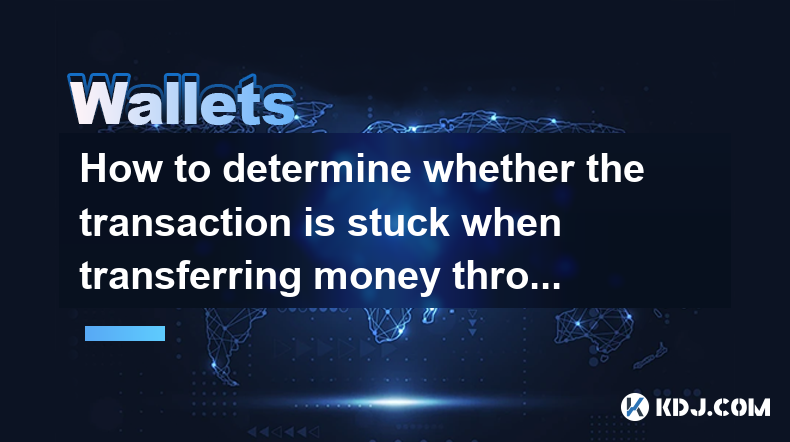
How to Determine Whether a Transaction is Stuck When Transferring Money Through an Ethereum Wallet
Transferring cryptocurrency, especially on a network like Ethereum, can sometimes feel like waiting for paint to dry. Network congestion and high gas fees can lead to transactions appearing "stuck," leaving users in a state of uncertainty. This article will guide you through identifying and understanding stuck Ethereum transactions.
First, understanding what constitutes a "stuck" transaction is crucial. A transaction isn't necessarily stuck just because it's taking a long time. Ethereum's network speed varies significantly depending on network congestion. A slow transaction is different from a genuinely stuck one. A truly stuck transaction is one that remains pending indefinitely, neither confirming nor failing.
To check the status of your transaction, you'll need your transaction hash (TXID). This alphanumeric string uniquely identifies your transaction on the blockchain. You'll find this in your wallet's transaction history. Once you have the TXID, you can use a blockchain explorer like Etherscan.io or similar services.
Using a blockchain explorer is the most reliable method for determining the status of your Ethereum transaction. Paste your TXID into the explorer's search bar. The explorer will show you the transaction's status – pending, confirmed, or failed. A "pending" status might indicate a slow transaction, while a "failed" status means the transaction was unsuccessful. If the transaction remains pending for an extended period, it's a strong indication that it might be stuck.
Several factors can cause an Ethereum transaction to get stuck. High gas fees are a common culprit. If you set your gas fee too low, miners might prioritize other transactions with higher fees, leading to your transaction remaining pending. Network congestion, a large number of transactions competing for processing, can also significantly delay confirmation times.
Another potential issue is an incorrect recipient address. Double-check the address you entered to ensure accuracy. Even a single incorrect character can render your transaction irrecoverable. Furthermore, some wallets might have issues, causing transactions to fail or appear stuck. Try restarting your wallet or using a different one if possible.
If you suspect your transaction is truly stuck, there are a few things you can attempt. However, it's important to remember that many of these are not guaranteed to work, and you should proceed with caution.
- Wait: Sometimes, patience is the best approach. Network congestion can eventually ease, allowing your transaction to be processed.
- Increase Gas Fee (with caution): You can try broadcasting the same transaction again with a significantly higher gas fee. This increases the likelihood that miners will prioritize your transaction. However, this doesn't guarantee success, and you might lose the initial gas fee.
- Contact Your Exchange/Wallet Provider: If you used a centralized exchange or wallet service, contact their support team for assistance. They may be able to help resolve the issue.
Understanding the reasons behind a stuck transaction is key to resolving the problem. Network congestion is often the primary culprit, but issues with gas fees, incorrect addresses, or wallet malfunctions can also cause delays or failures. Always double-check your information before initiating a transaction.
Frequently Asked Questions:
Q: How long should I wait before considering a transaction stuck?
A: There's no set timeframe. Network conditions vary. However, if a transaction remains pending for several hours or even a day, especially during periods of normal network activity, it's cause for concern.
Q: What happens if my transaction is truly stuck?
A: Unfortunately, in many cases, a truly stuck transaction means the funds are effectively lost. The chances of recovery depend on the specific cause and the resources available.
Q: Can I cancel a pending Ethereum transaction?
A: You can't directly cancel a pending transaction. You can try resubmitting it with a higher gas fee, hoping the new transaction will supersede the old one. However, this doesn't guarantee success, and you'll likely lose the gas fee from the original transaction.
Q: Is there a way to recover funds from a stuck transaction?
A: Recovery is difficult and depends on the cause. If it's due to a simple error like an incorrect address, recovery might be impossible. If it's due to a wallet issue, contacting the wallet provider might be helpful.
Q: How can I prevent transactions from getting stuck?
A: Always use a reputable wallet, double-check recipient addresses, monitor network congestion before sending large transactions, and set appropriate gas fees, slightly above the average suggested fee. Consider using a transaction accelerator service to help prioritize your transaction.
Q: What are gas fees and why are they important?
A: Gas fees are transaction fees paid to miners for processing transactions on the Ethereum network. Higher gas fees incentivize miners to prioritize your transaction, reducing the risk of it getting stuck. However, excessively high fees can also be costly.
Q: What is a blockchain explorer, and how does it help?
A: A blockchain explorer is a website that allows you to view transactions and blocks on a blockchain. By inputting your transaction hash, you can see the status of your transaction (pending, confirmed, or failed). It provides crucial information for troubleshooting.
Disclaimer:info@kdj.com
The information provided is not trading advice. kdj.com does not assume any responsibility for any investments made based on the information provided in this article. Cryptocurrencies are highly volatile and it is highly recommended that you invest with caution after thorough research!
If you believe that the content used on this website infringes your copyright, please contact us immediately (info@kdj.com) and we will delete it promptly.
- The Blockchain Group Buys 580 Bitcoin
- 2025-03-28 08:45:12
- CoreWeave Raises $1.5 Billion in IPO, Valuing the Artificial Intelligence-Focused Firm at Roughly $23 Billion
- 2025-03-28 08:45:12
- Walrus (WAL) Listing Announcement
- 2025-03-28 08:40:12
- XRP, DOGE, and RENDER Are the Top 3 Cryptocurrencies to Watch Ahead of Trump's 'Liberation Day' on April 2
- 2025-03-28 08:40:12
- Solaxy Introduces Layer 2 Scaling to Tackle Solana's Network Strain
- 2025-03-28 08:35:12
- Arctic Pablo Coin (APC) Presale Heats Up – Crystal Cove Phase Offers Unmatched Potential
- 2025-03-28 08:35:12
Related knowledge
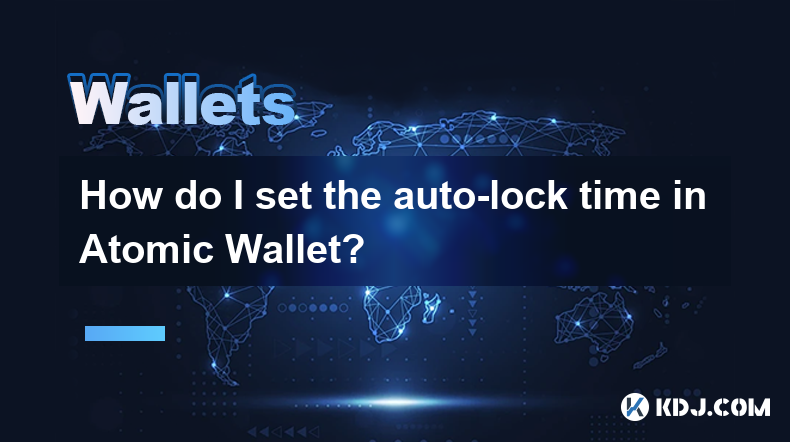
How do I set the auto-lock time in Atomic Wallet?
Mar 28,2025 at 07:35am
Understanding Atomic Wallet's Auto-Lock FeatureAtomic Wallet prioritizes security. A key aspect of this is its auto-lock feature, which automatically locks your wallet after a period of inactivity. This prevents unauthorized access to your funds should your device be compromised or left unattended. The auto-lock time is customizable, allowing you to ba...
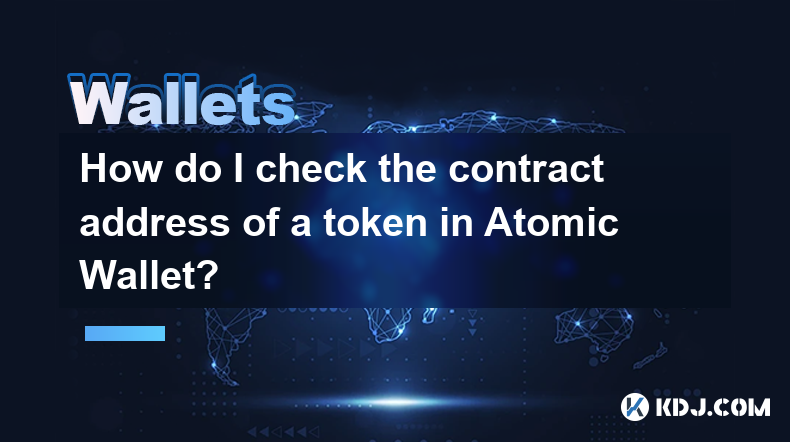
How do I check the contract address of a token in Atomic Wallet?
Mar 28,2025 at 07:49am
Locating Token Contract Addresses within Atomic WalletAtomic Wallet, a popular multi-currency wallet, doesn't directly display the contract address of a token within its main interface in the same way some other wallets might. This is because Atomic Wallet prioritizes user-friendliness, focusing on simplifying the user experience rather than displaying...
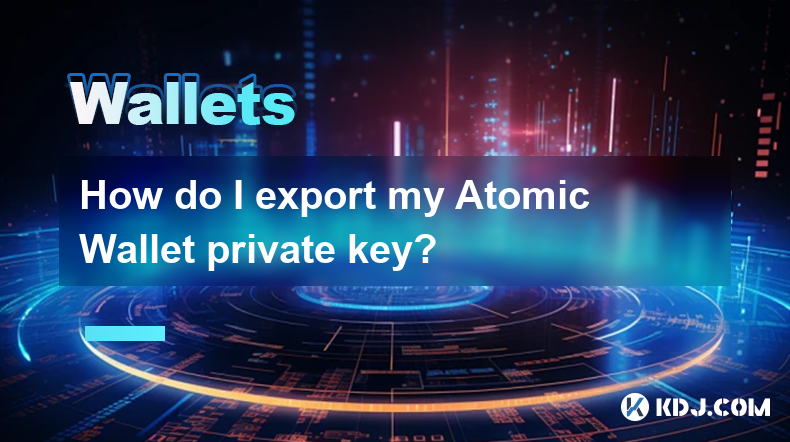
How do I export my Atomic Wallet private key?
Mar 27,2025 at 05:28pm
Atomic Wallet prioritizes security, and therefore, directly exporting your private key is not a feature offered within the wallet interface. This is a crucial security measure to protect your funds from unauthorized access. If someone gains access to your private key, they gain complete control over your cryptocurrency holdings. The wallet's design emp...
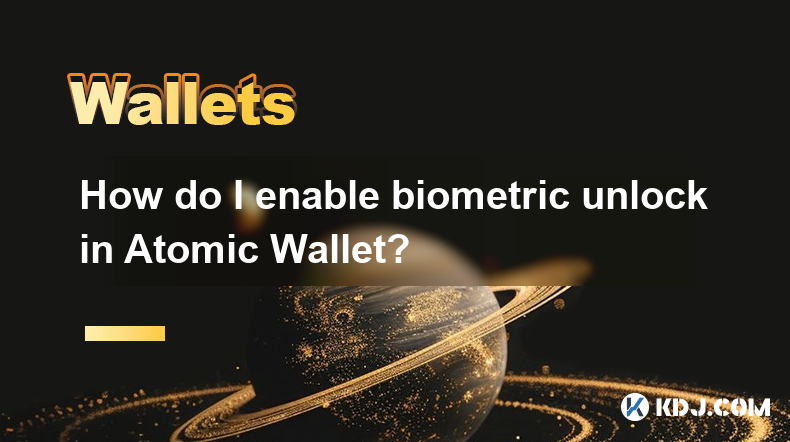
How do I enable biometric unlock in Atomic Wallet?
Mar 28,2025 at 02:14am
Biometric Authentication in Atomic Wallet: A Step-by-Step GuideAtomic Wallet offers a convenient security feature: biometric authentication. This allows you to access your wallet using your fingerprint or facial recognition instead of typing your password every time. This enhances security and convenience, but remember, it's an additional layer of secu...
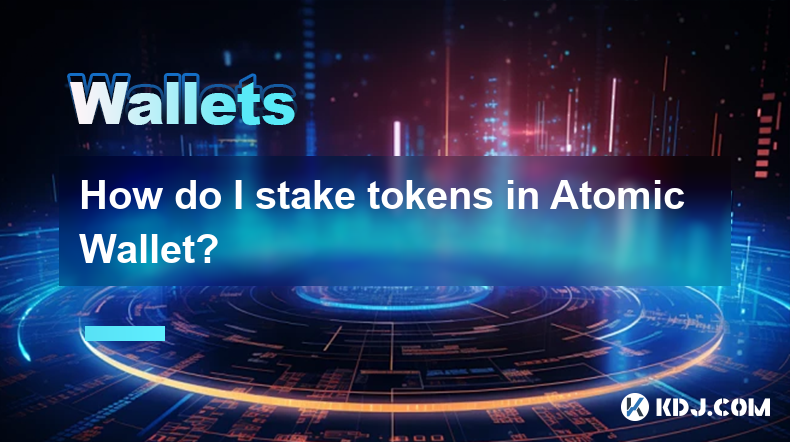
How do I stake tokens in Atomic Wallet?
Mar 27,2025 at 08:00pm
Understanding Atomic Wallet StakingAtomic Wallet offers a user-friendly interface for staking various cryptocurrencies. Staking allows you to earn passive income by locking up your tokens to support the network's security and validation. The rewards vary depending on the specific cryptocurrency and the network's conditions. Before you begin, ensure you...
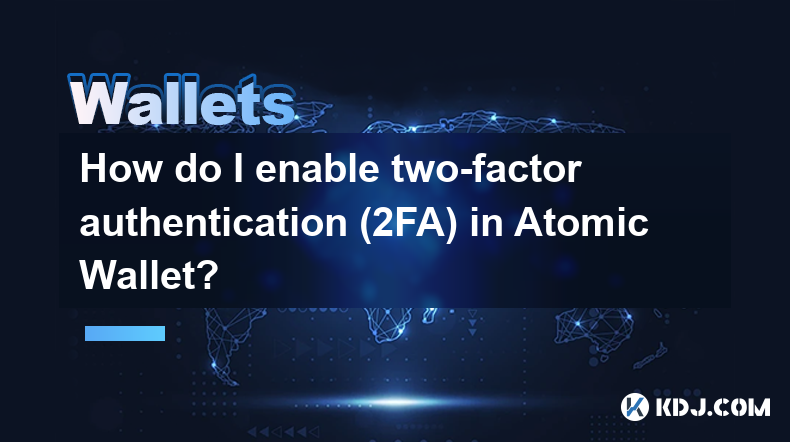
How do I enable two-factor authentication (2FA) in Atomic Wallet?
Mar 28,2025 at 04:56am
Enabling Two-Factor Authentication (2FA) in Atomic Wallet: A Step-by-Step GuideAtomic Wallet, a popular cryptocurrency wallet, prioritizes user security. Two-Factor Authentication (2FA) adds an extra layer of protection against unauthorized access, significantly reducing the risk of theft. This guide details how to enable 2FA within the Atomic Wallet a...

How do I set the auto-lock time in Atomic Wallet?
Mar 28,2025 at 07:35am
Understanding Atomic Wallet's Auto-Lock FeatureAtomic Wallet prioritizes security. A key aspect of this is its auto-lock feature, which automatically locks your wallet after a period of inactivity. This prevents unauthorized access to your funds should your device be compromised or left unattended. The auto-lock time is customizable, allowing you to ba...

How do I check the contract address of a token in Atomic Wallet?
Mar 28,2025 at 07:49am
Locating Token Contract Addresses within Atomic WalletAtomic Wallet, a popular multi-currency wallet, doesn't directly display the contract address of a token within its main interface in the same way some other wallets might. This is because Atomic Wallet prioritizes user-friendliness, focusing on simplifying the user experience rather than displaying...

How do I export my Atomic Wallet private key?
Mar 27,2025 at 05:28pm
Atomic Wallet prioritizes security, and therefore, directly exporting your private key is not a feature offered within the wallet interface. This is a crucial security measure to protect your funds from unauthorized access. If someone gains access to your private key, they gain complete control over your cryptocurrency holdings. The wallet's design emp...

How do I enable biometric unlock in Atomic Wallet?
Mar 28,2025 at 02:14am
Biometric Authentication in Atomic Wallet: A Step-by-Step GuideAtomic Wallet offers a convenient security feature: biometric authentication. This allows you to access your wallet using your fingerprint or facial recognition instead of typing your password every time. This enhances security and convenience, but remember, it's an additional layer of secu...

How do I stake tokens in Atomic Wallet?
Mar 27,2025 at 08:00pm
Understanding Atomic Wallet StakingAtomic Wallet offers a user-friendly interface for staking various cryptocurrencies. Staking allows you to earn passive income by locking up your tokens to support the network's security and validation. The rewards vary depending on the specific cryptocurrency and the network's conditions. Before you begin, ensure you...

How do I enable two-factor authentication (2FA) in Atomic Wallet?
Mar 28,2025 at 04:56am
Enabling Two-Factor Authentication (2FA) in Atomic Wallet: A Step-by-Step GuideAtomic Wallet, a popular cryptocurrency wallet, prioritizes user security. Two-Factor Authentication (2FA) adds an extra layer of protection against unauthorized access, significantly reducing the risk of theft. This guide details how to enable 2FA within the Atomic Wallet a...
See all articles




















































































